Are you wondering what the difference is between modal fabric vs cotton? Don’t worry, because you’re not alone.
The growing popularity of alternative sustainable fabrics such as modal has left consumers wondering what modal fabric is and how it is different from cotton.
That’s why we’ve compared both modal vs cotton, explaining how both materials are made, the pros and cons of each fabric, and whether modal is an eco-friendly alternative to cotton.
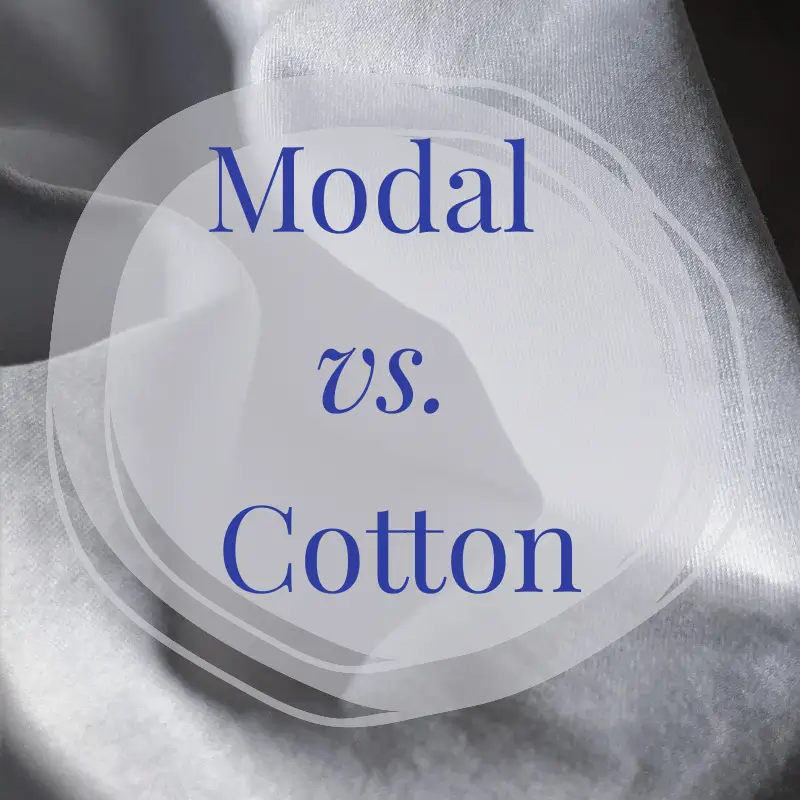
Modal vs Cotton
Modal Fabric Pros
Modal Fabric Cons
Cotton Pros
Cotton Cons
What Is Cotton?
Cotton is a natural fiber grown from the cotton plant, Gossypium spp. Once harvested, the cotton fibers are spun or woven into fabric.
Approximately 26 million tonnes of cotton is produced for the fashion industry globally, meaning around 60% of global cotton fiber production is destined for fashion and textile products.
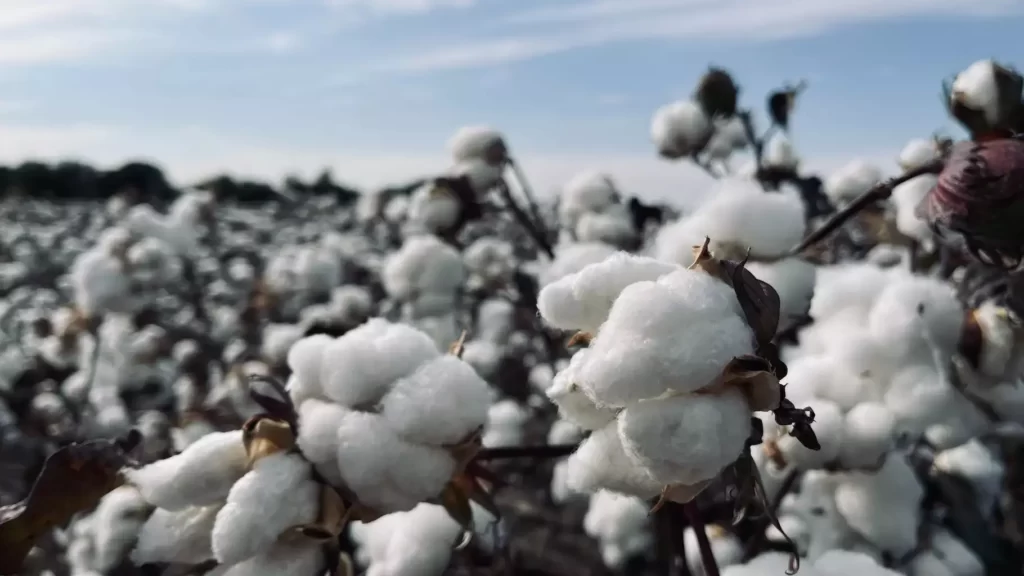
How Is Cotton Made?
Properties of Cotton Fabric
Thanks to its range of properties, cotton has been used for thousands of years as a textile. Today cotton is widely used in clothing, bed linen, upholstery, towels, and shoes.
The most common properties of cotton include:
What Is Modal?
Modal, a type of Rayon fabric, is a bio-based semi-synthetic fiber derived from the natural fibers derived from beech trees.
Modal isn’t a new fabric, as it’s been around for 70 years, but only recently made its way into the mainstream fashion markets. Nevertheless, modal is gaining in popularity, especially with sustainable fashion brands, because it uses less water and energy in production compared to other fibers like cotton or polyester.
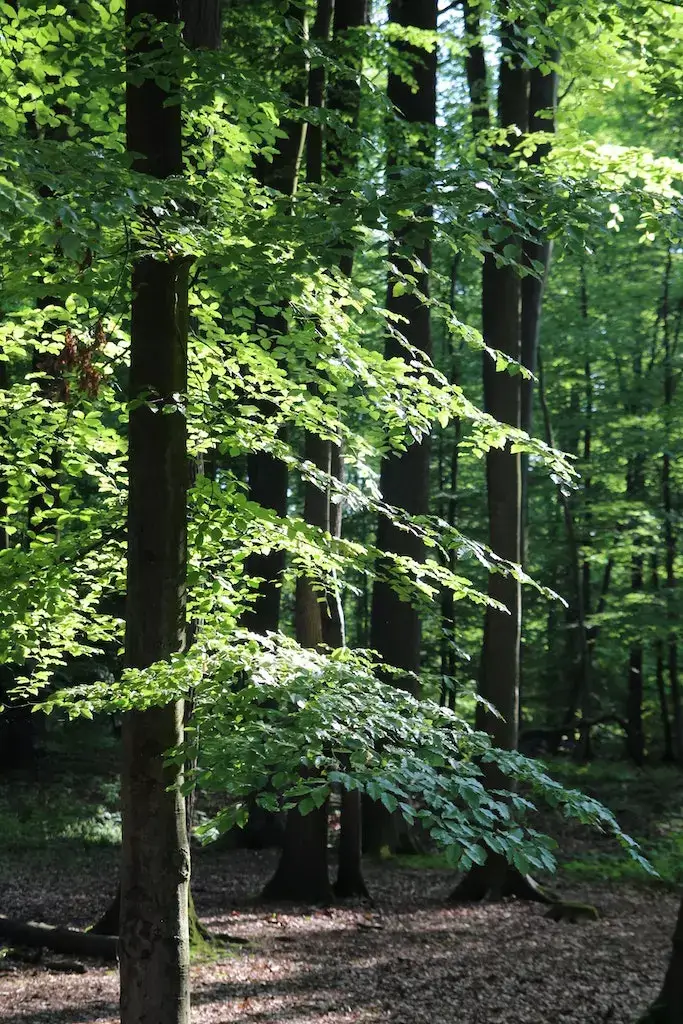
Is Modal a Natural Fiber?
Even though modal is made from tree fibers, modal is not a natural fiber but a semi-synthetic fiber.
How Is Modal Made?
Are Modal and Cotton The Same Fabric?
It’s important to note that while modal can be made from natural fibers, the two fabrics are not the same. Modal is a semi-synthetic fiber made through a series of chemical treatments, while cotton is a natural fiber.
Properties of Modal Fabric
Modal has an effortlessly draping texture that resembles silk, making it a great vegan alternative to silk.
Modal also has excellent moisture-absorbing properties, making it a popular choice for underwear and activewear.
Along with its moisture-wicking properties, modal has properties that include:
Which Is More Eco-Friendly Modal vs Cotton?
Modal has grown in popularity within the sustainable fabric sector because the Beech trees from which the cellulose is obtained can grow with ten times less water than is needed for cotton growth.
Environmental Drawbacks of Cotton
Cotton plants require vast amounts of water to grow, using around 44 trillion liters of water every year.
Cotton is also responsible for the highest pesticide use for any fiber crop, using around $2 billion worth of pesticides every year. These pesticides can include harmful chemicals such as heavy metals, Ammonia, and Chlorine, which can have adverse health effects on weavers and garment workers and pollute soil and waterways.
If you are looking for cotton, we recommend organic cotton over cotton, as it’s grown with less water and without harmful chemicals; discover more about organic cotton here.
Environmental Drawbacks of Modal
However, even though cotton requires a large amount of water and pesticides to grow, we should not automatically assume that all Modal types are more eco-friendly than cotton.
Modal can also be unsustainable if manufacturers source and produce their modal fabrics from unregulated and unsustainable sources.
For example, there is a risk of growing deforestation if the harvesting of beech trees isn’t closely regulated for modal production. In addition, some producers may only use the cellulose from the beech tree, wasting the other tree material.
Deforestation also leads to the loss of ecosystem habitats and reduces the biodiversity within our forests.
In addition to the deforestation risk, modal production requires a large usage of chemicals such as sodium hydroxide and sulfuric acid. If these chemicals are not disposed of or used correctly, they also present a risk to humans and ecosystems.
Although, fear not, as there is hope for modal as an eco-friendly alternative to cotton. For example, modal producers can obtain their trees from FSC certified and PEFC certified sources, which ensures responsible sourcing of beech trees. Moreover, manufacturers like Lenzing Modal use sustainable production practices to produce their modal rayon fabric.
Some modal manufacturers also ensure tight regulations around chemical use, ensuring no chemicals enter waterways or come in contact with humans or ecosystems.
Is Modal More Absorbent Than Cotton?
Overall, modal has better moisture-absorbing properties than cotton. As a result, modal is used commonly for activewear because it is 50% more hygroscopic per unit than cotton.
Is Modal Stronger Than Cotton?
The semi-synthetic properties of modal make it a stronger and more durable material than cotton. While cotton may pile and wear over time, modal is an anti-pilling fabric that retains its shape and structure after washing.
Is Modal More Expensive Than Cotton?
Yes, modal is more expensive than cotton.
Summary Cotton vs Modal
It is clear that both modal and cotton have similar but very different properties.
In terms of sustainability, it’s clear that both cotton and modal have significant environmental drawbacks.
If you’re looking for genuinely sustainable fabric, we recommend opting for organic cotton, as it is grown without pesticides or harmful chemicals and requires 10x less water to grow than cotton.
Related Posts: Modal vs Cotton
If you enjoyed this materials guide and want to discover the properties of other sustainable materials, check out our series on jute, Tencel, linen, and hemp.

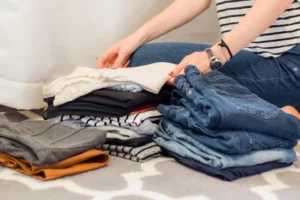

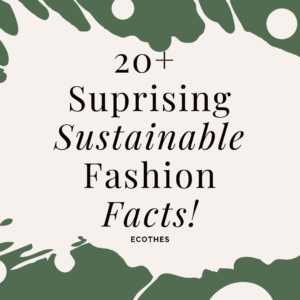
I prefer 100% cotton. It does not cling or stretch